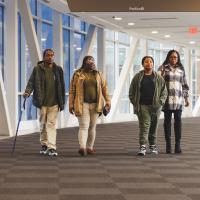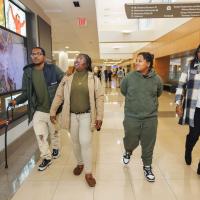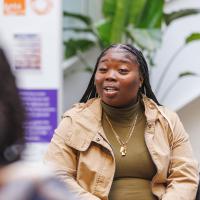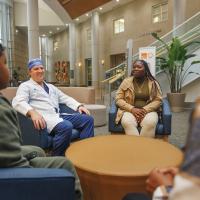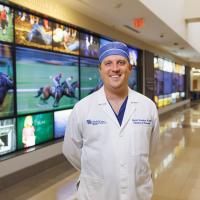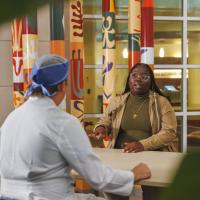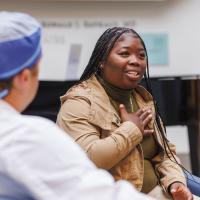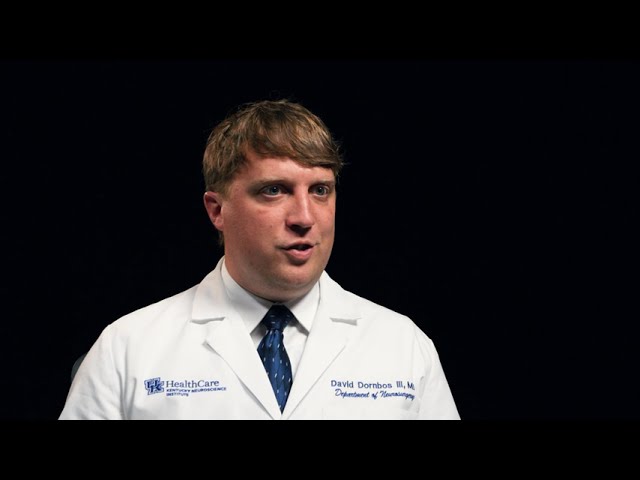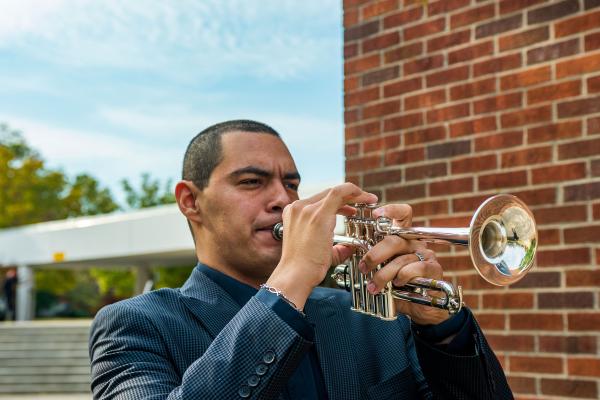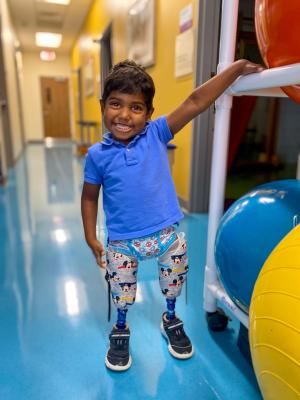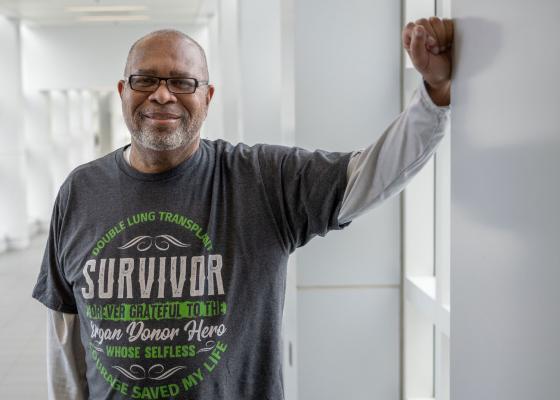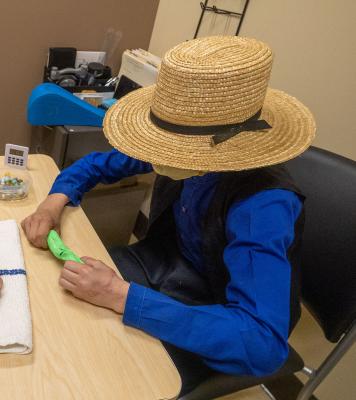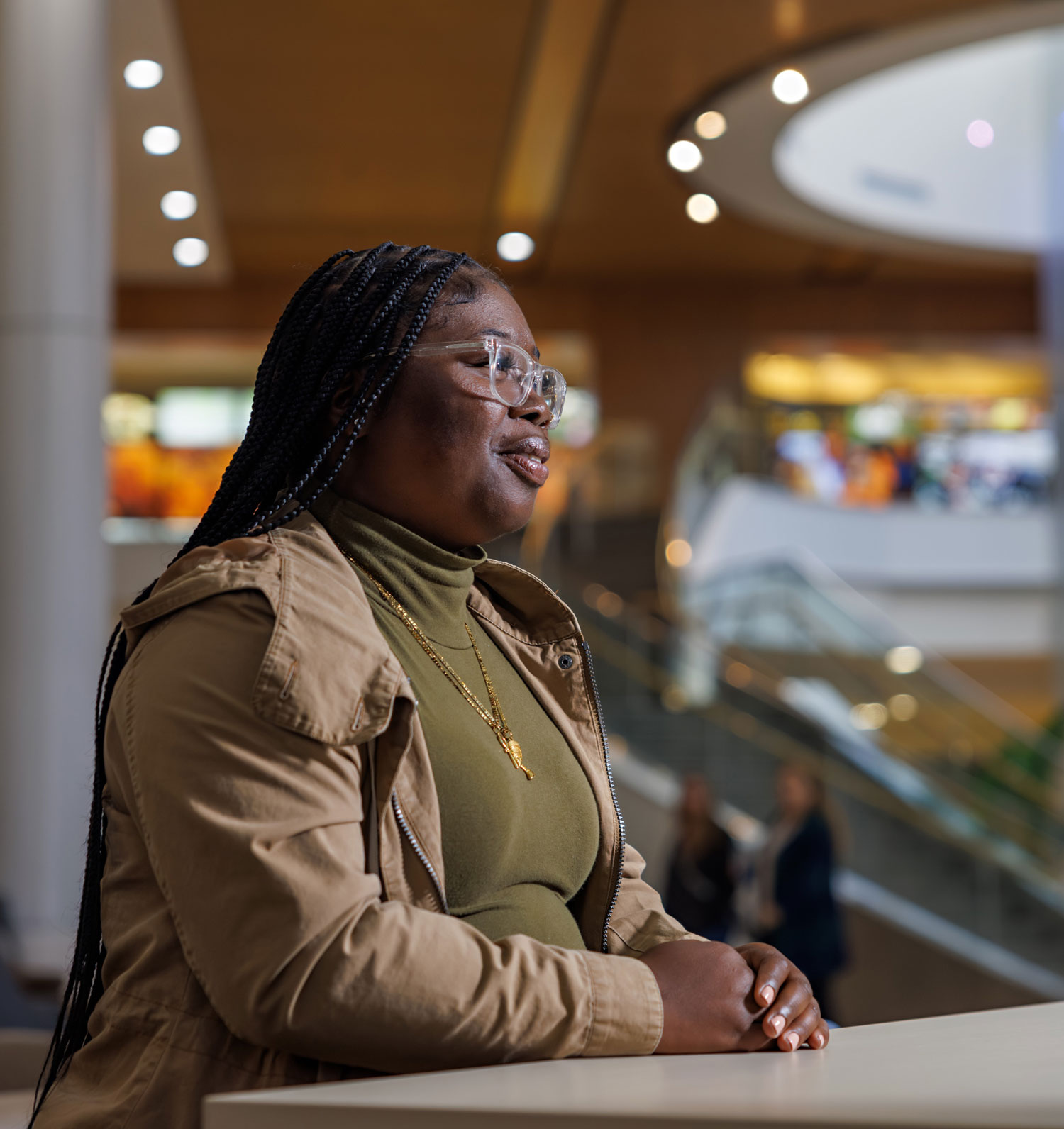
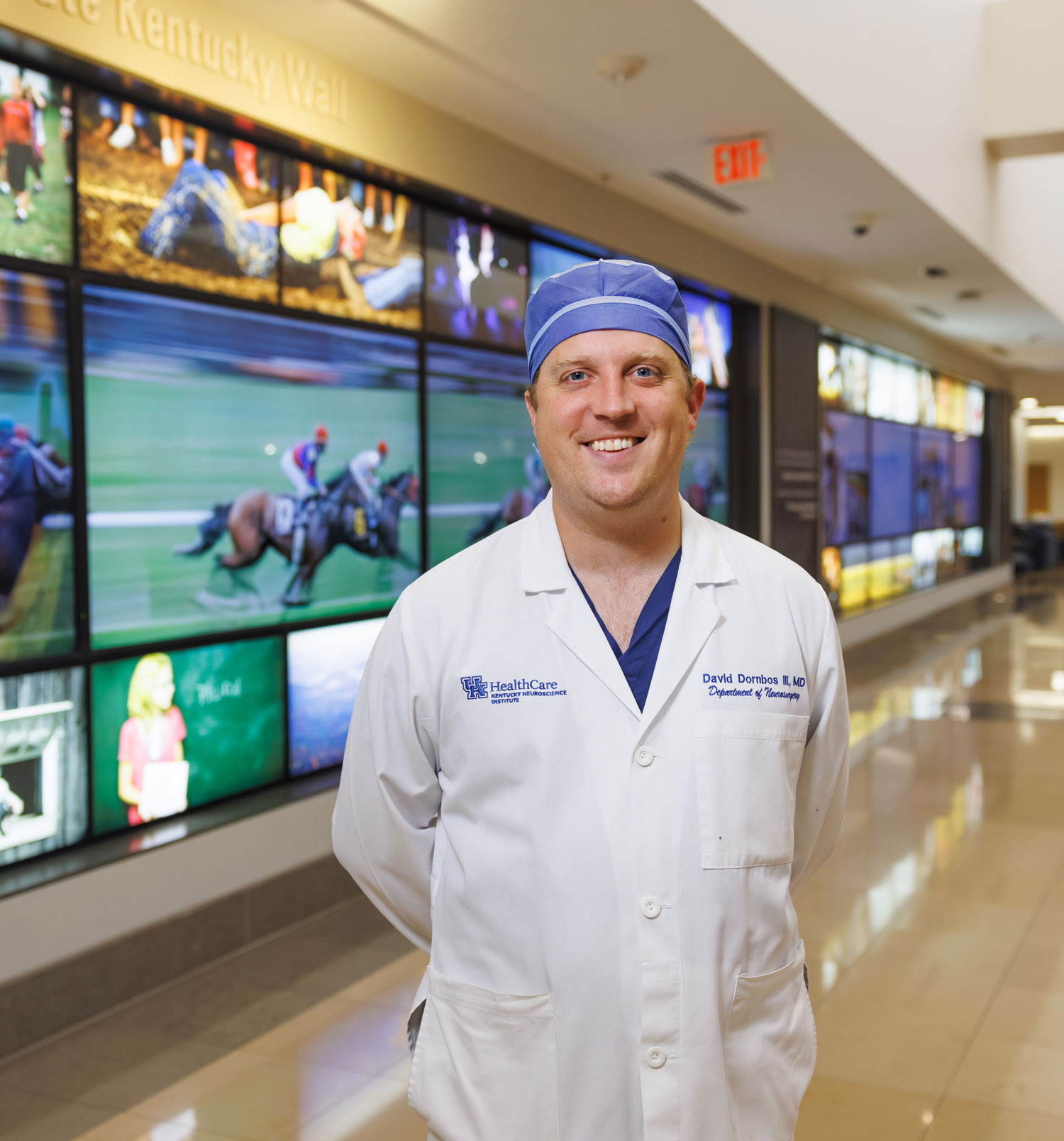
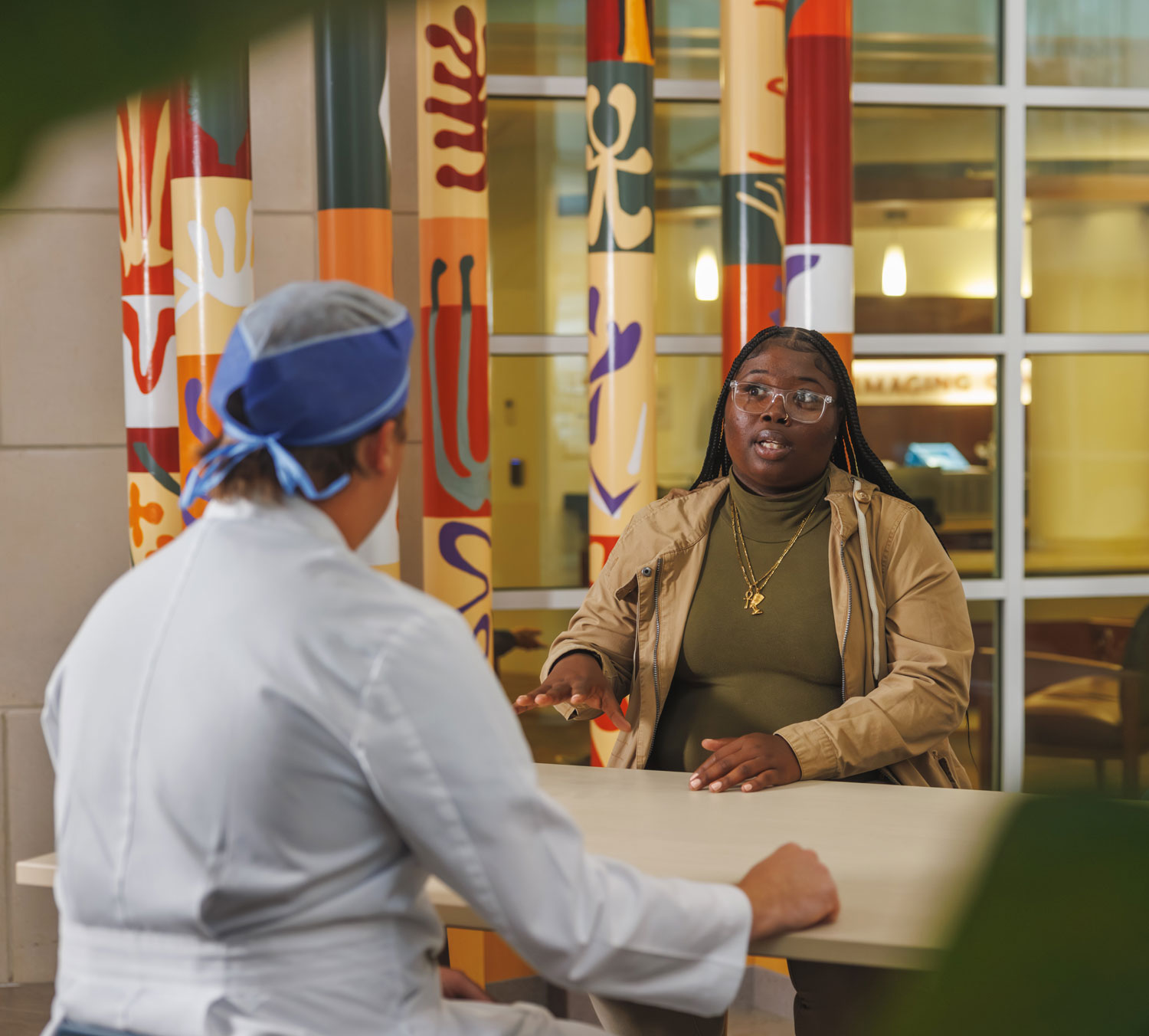
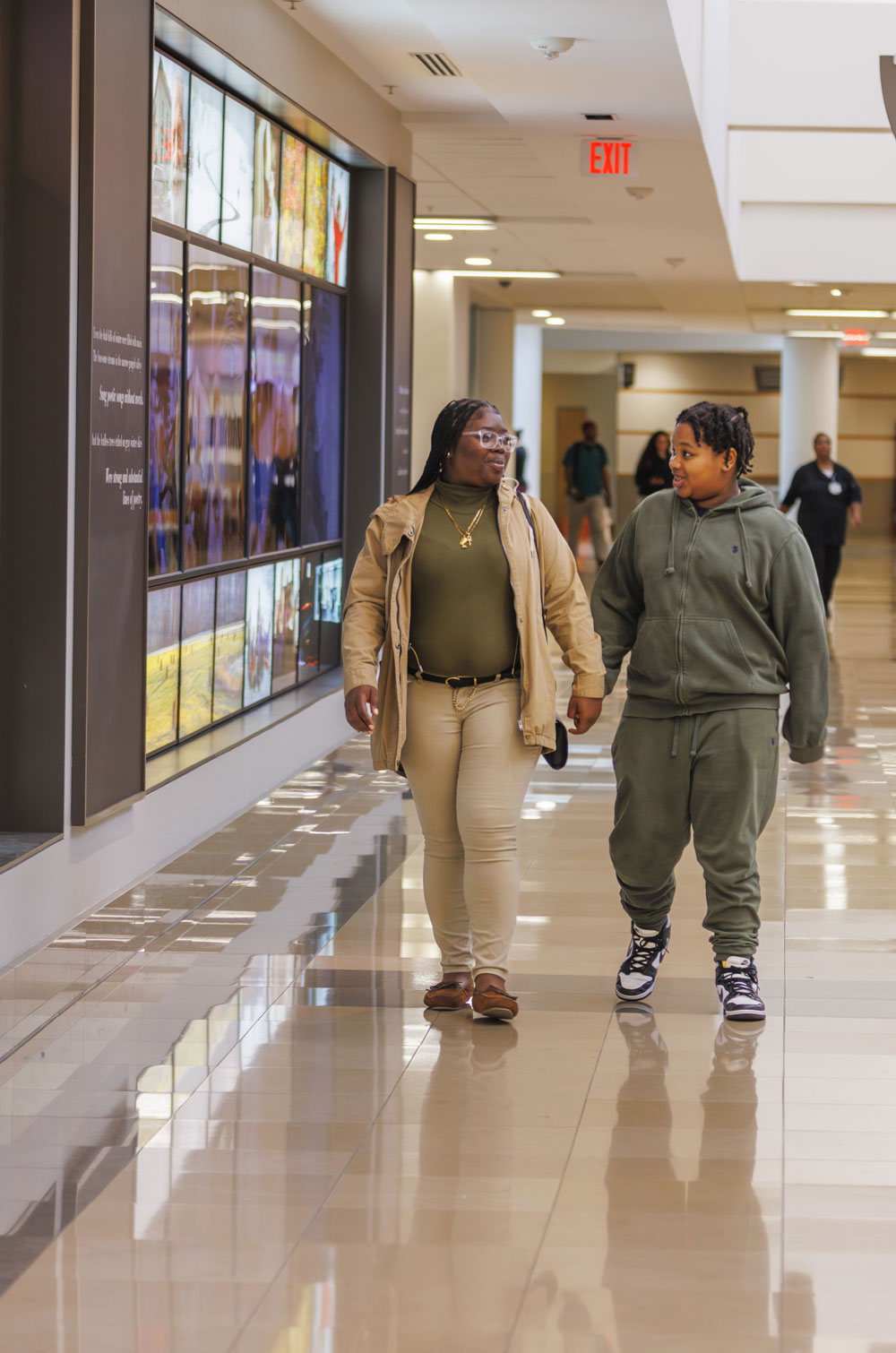
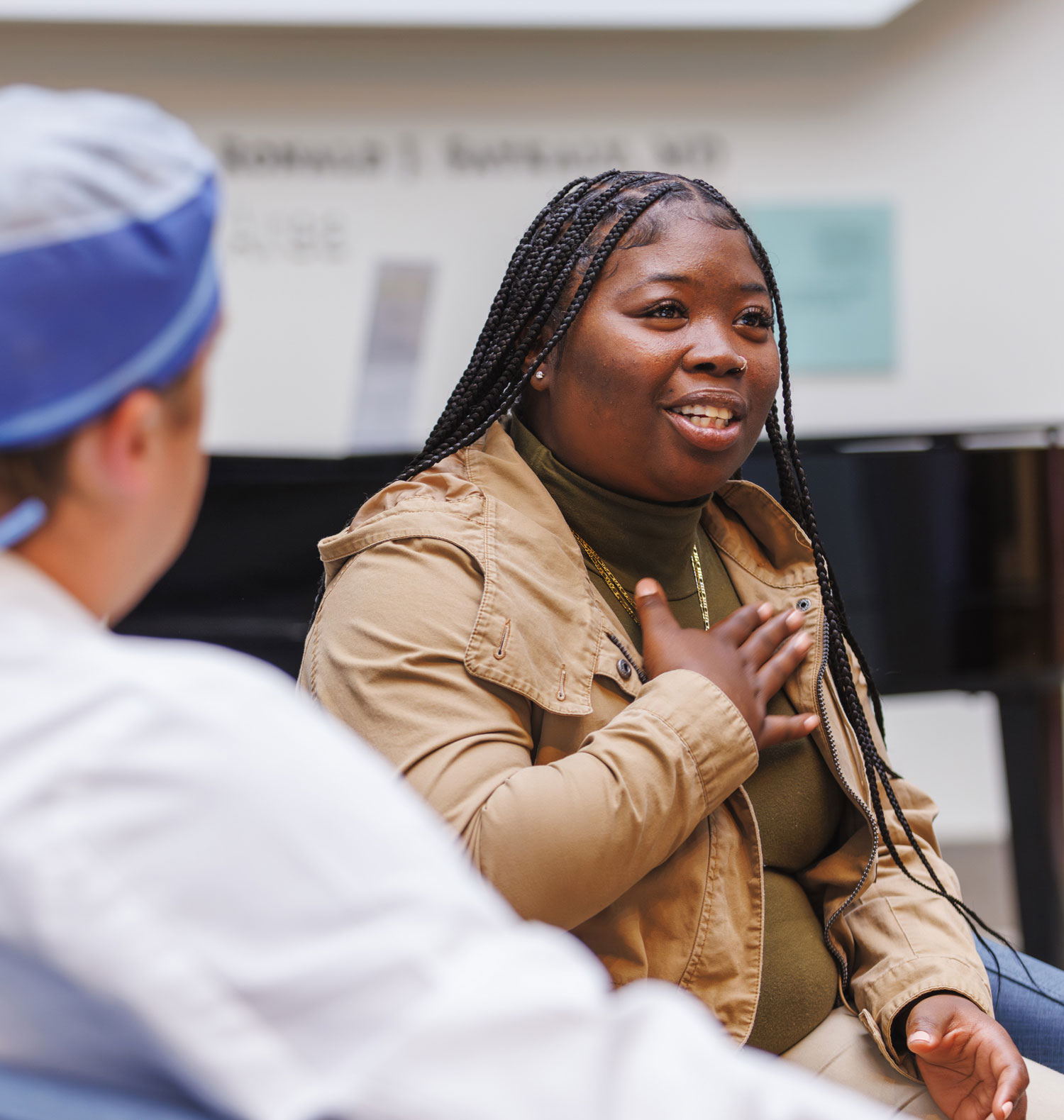

Caring for the Caregiver
In 2019, Tiona Stevenson realized she didn’t feel like herself.
She couldn’t sleep. She couldn’t focus at work. Something was off, but Tiona couldn’t pinpoint the problem. She spent two long years working through it.
“I was working my regular schedule at home and started feeling dizzy all the time. I tried to push through and keep working, but staring at a computer screen all day was also messing with my vision,” Tiona said. “I couldn’t focus and felt lightheaded, until one day, I felt like I might pass out.”
Tiona’s whole left side seized up and she couldn’t speak. She was having a seizure. Tiona went to a hospital but once she got there, she felt normal. She didn’t have an MRI and went home after a few hours.
The next several months weren’t much different. Tiona still felt off, but she pushed through and kept working in order to provide for her pre-teen son, Zaire, her boyfriend and her mother. But a few months later, she had another seizure This time an MRI at the ER revealed a brain spot, so Tiona was referred to a neurologist.
Things were about to get much worse.
‘I really felt like I was dying’
“In September, I had a grand mal seizure and was admitted to the hospital,” Tiona said. “I really felt like I was dying. I just wanted to be in a dark room. I couldn’t take care of my family, my eyes hurt, I had no energy and I felt nauseous.”
Luckily, Dr. David Dornbos was on call the day that Tiona came to the emergency department at UK Albert B. Chandler Hospital after her grand mal seizure. Dr. Dornbos, a neurosurgeon at UK HealthCare's Kentucky Neuroscience Institute, was able to quickly diagnose what was wrong: Tiona had an arteriovenous malformation, or AVM, an abnormal connection between arteries and veins that not only causes seizures but also produces a high hemorrhage risk and abnormal blood flow.
“With AVMs, it’s always congenital, which means she was born with it,” Dr. Dornbos said. “A lot of AVMs stay clinically quiet, but we start finding them after patients come to see us with headaches or seizures – or they get their head scanned for something else. We found Tiona’s after her seizure when she came to our ER. And I’m so glad she finally ended up here.”
Tiona’s AVM was large enough that Dr. Dornbos recommended surgery. To complicate matters, the AVM was only one millimeter away from the part of Tiona’s brain that controls her ability to move the opposite side of her body. It wouldn’t be an easy surgery, but Dr. Dornbos was confident that it was the right move.
“I ultimately recommended surgery because she’s young and already symptomatic,” Dr. Dornbos said. “Her AVM was pretty big and close to important areas of the brain, but it was in a surgically safe place, and this type of surgery is my clinical niche. Luckily, Tiona made it to us before her AVM became a bigger problem.”
Left untreated, Tiona would have continued having seizures — or worse. Her AVM was at high risk for rupture and at the very least, there was a good chance it would cause a potentially catastrophic brain bleed in the near future.
“Relative to stroke, AVMs are fairly uncommon, but we do treat them regularly. Sometimes we use radiation, but if there’s a high hemorrhage risk, we are more likely to go to surgery,” Dr. Dornbos said. “Because they are rare, if you do have an AVM, it’s crucial to get to a high-volume surgical center like UK HealthCare. Some patients don’t need their AVMs taken out, but if you are at a center without all of the options, you’re limited in how to take care of it.”
‘I had to get better’
Tiona was just 31 years old at the time of her surgery, with her entire life ahead of her. She said she knew surgery was the right move, even though there was some risk involved.
“I had to get better to take care of my son,” Tiona said. “With the non-surgical route, there was a high chance of me not improving, so surgery was an easy decision. I prayed and left it in God’s hands, and Dr. Dornbos made me feel so confident.”
Tiona’s surgery was a huge success. She came in on a Friday for the first part of a two-part procedure: an embolization that would “kill” off the AVM using a liquid plastic-like substance to cut the blood flow, making the second procedure much safer. And on Monday, Dr. Dornbos successfully performed Tiona’s craniotomy, carefully removing the AVM by disconnecting it from the involved arteries and veins.
Even though it was a long surgery, Tiona was home by the end of the week. The procedure was close to Tiona’s premotor cortex, so recovery hasn’t always been easy.
“I noticed when I was out of surgery, my brain couldn’t form what I wanted to say, and my whole left side was weak,” Tiona said. “I still have times when I stutter over words, and at first, I couldn’t be fully independent.”
But soon after the surgery, things started looking up. Tiona started physical therapy, speech therapy and occupational therapy. It was frustrating at first, especially because bright lights would hurt her eyes, and appointments were scheduled first thing in the morning. But Tiona persevered.
“It was a little trying at the beginning, but I stuck it through, and each visit got easier and easier,” Tiona said. “I’m so thankful for each of the therapies because they helped tremendously.”
‘She’s the rock of her family’
Tiona is also grateful for Dr. Dornbos’ entire staff, who helped her through every step of her care. Tiona is the primary caregiver for her family, so it wasn’t easy for her to rely on others for help, but she’s especially appreciative of Hilary McCord, a physician assistant who works with Dr. Dornbos.
“Hilary has been great. I know I can be a pain, calling every day, and I’m really thankful for her. She was so patient, and I’m thankful for all of the staff. Any staff I came in contact with, from prepping and taking care of me to recovery, they were all so kind. And so easy to get in touch with if I needed anything.”
McCord was quick to mention that the feeling was mutual. She couldn’t help but notice how strong Tiona was – and how essential a full-strength Tiona was to her entire family.
“We really became part of her support system,” McCord said. “We knew recovery would be an uphill battle in terms of getting her strength back, but Tiona did amazing. She’s the rock of her family, and I know they needed her to get better. I’m amazed she bounced back so quickly.”
While Tiona isn’t quite back to 100 percent, her long-term prognosis is great.
“At this point, it’s very rare for this to recur or come back. Once these are gone, it’s 99 percent curative,” Dr. Dornbos said. “Tiona is an extremely strong individual. She runs her family and takes care of everyone, and we’re so glad to be able to take care of her.”
Today, Tiona is looking forward to her seizure-free future. She doesn’t feel 100% every day, and sometimes she feels a little low on energy, but she says she’s so glad to be able to take care of her family and do simple things, like take Zaire to the state fair or the park – or even just the grocery store. But mostly, she’s thankful: for God, for being alive, for her family and for Dr. Dornbos.
“Dr. Dornbos is a life-changer. He really saved my life, and I’m so, so thankful. I believe things happen for a reason, and he’s helped me tremendously. I can’t thank him enough. He’s been wonderful.”


